Part 47: Venice Part 11: The Islander (1777-1821)
Venice Part 11: The Islander (1777-1821)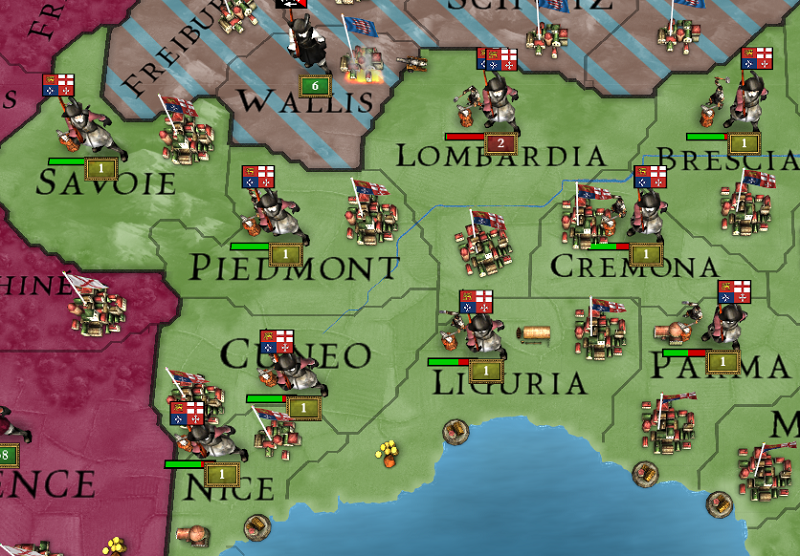
Italy has a renewed colonial policy to carry it into the next century. Plans are in motion to expand Italian influence in Southeast Asia as well as to enter the chaotic waters of the Caribbean. In northern Italy, a new army is being organized for use in the Caribbean theater.
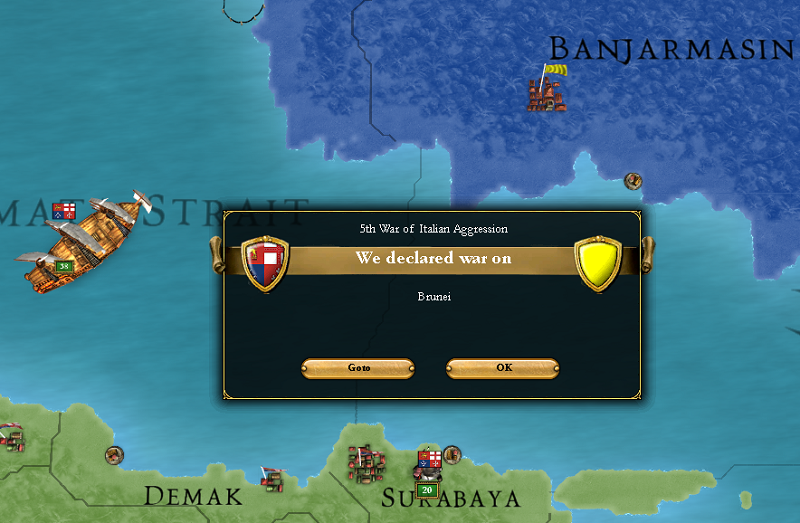
The existing Italian forces in Southeast Asia, on the other hand, are quite capable of fighting a new war without any additional reinforcements. The far east fleets give the local forces so much mobility that they can hop from island to island with ease. The invasion of Brunei begins in late 1777.
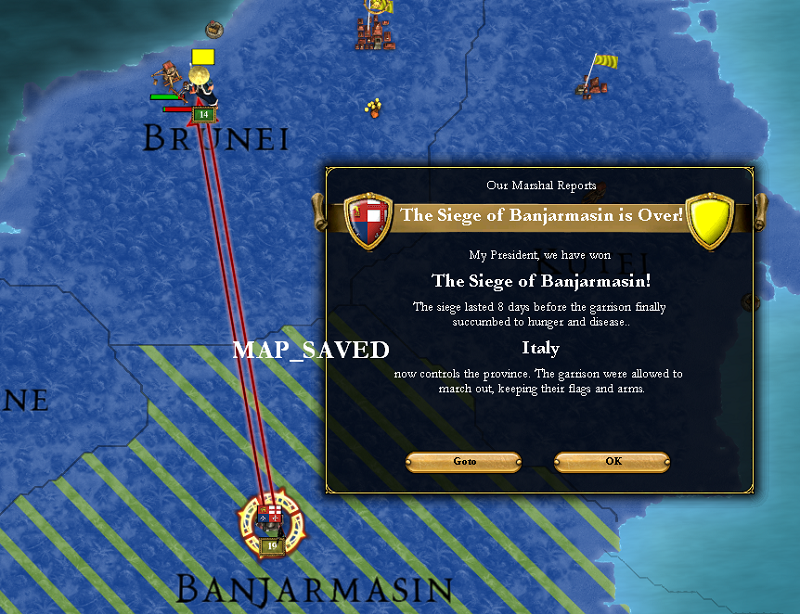
The local fortifications can't stand up to the assault of a modern army, but the thick and inhospitable jungles of the region cause attrition and a sluggish advance. The local commanders decide to push towards the Capital of Brunei immediately for a decisive victory.
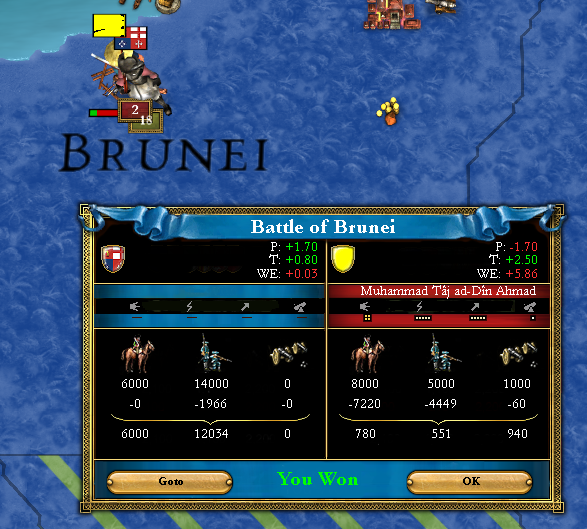
The Sultan of Brunei offers a fierce resistance to the Italian attack, but his forces ultimately crumble before modern riflemen under the command of junior officers.
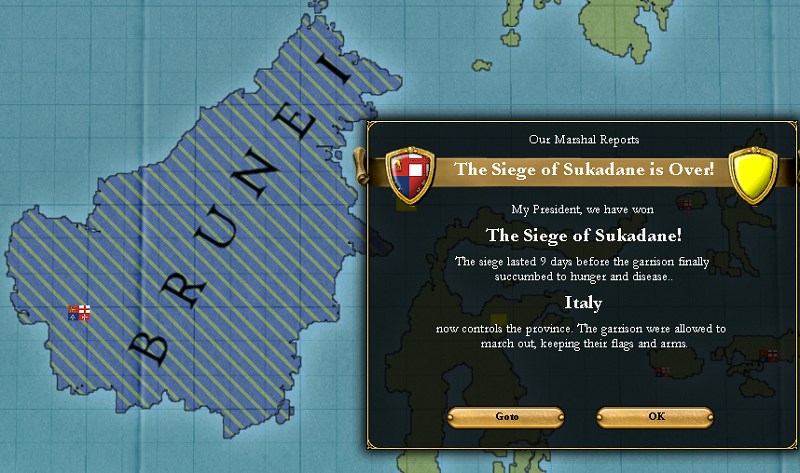
The last province of Brunei falls to invading forces by the summer of 1778. This marks the beginning of a long occupation with the ultimate goal of bringing the entire island under Italian rule.

In the west, a fleet of new, massive ships of the line escorts an eager army of 28,000 men to the Americas.
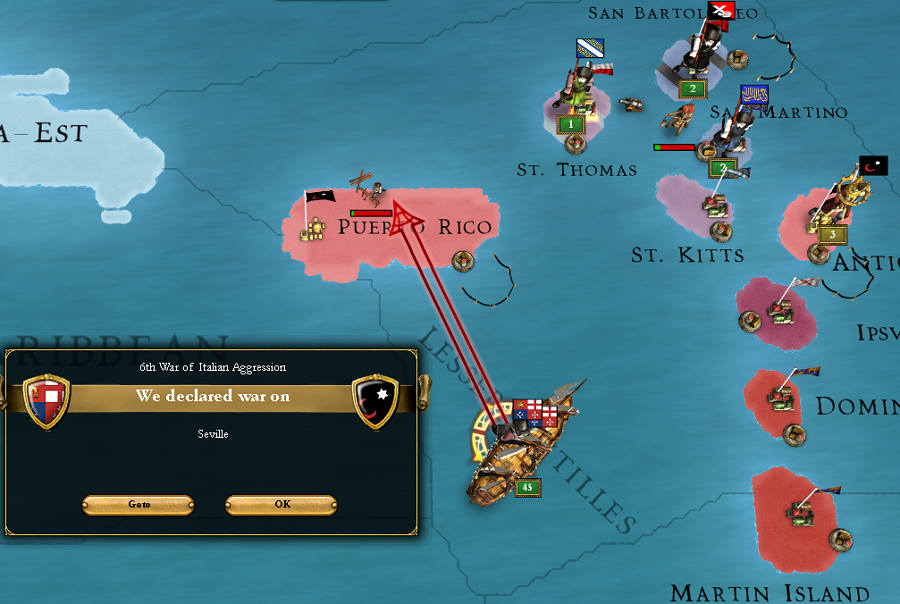
These islands were once owned by Iberia, but the small state of Seville split off from the great power during their war with Burgundy a few decades ago. Italy begins its conquest of the Caribbean with the invasion of Sevillian Puerto Rico.
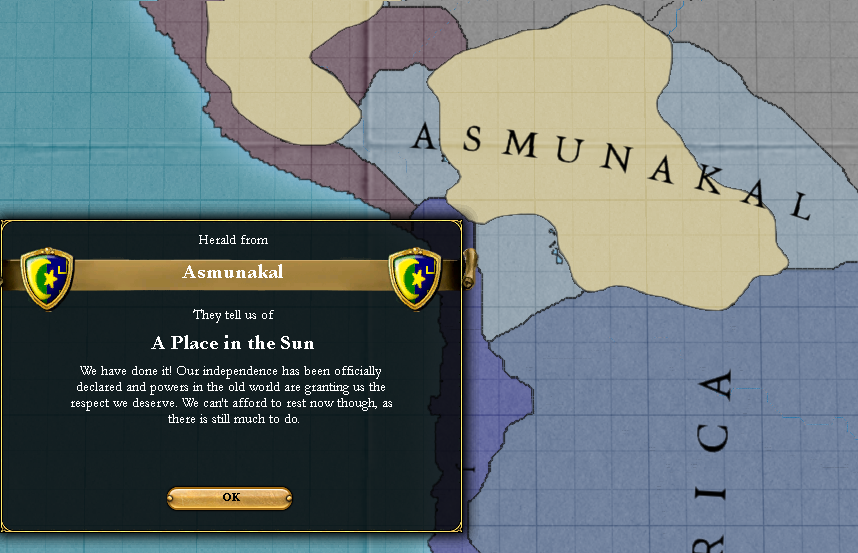
The Sultanate of Asmunakal splits away from Iberia in central South America. The new nation turns its attention towards the Inca to expand its borders.
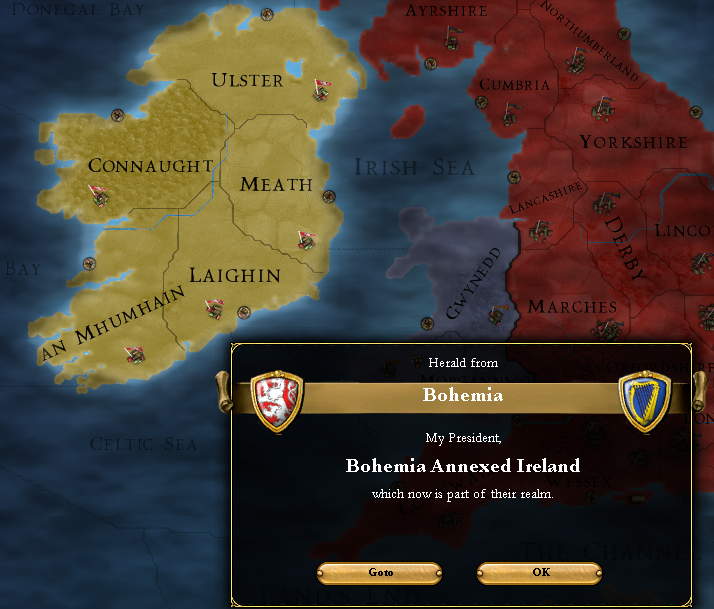
In Europe, Bohemia annexes the entirety of Ireland. Bohemia has fought many wars with the English over the years, and the proximity of Bohemian Ireland is sure to spark many more conflicts in the future.
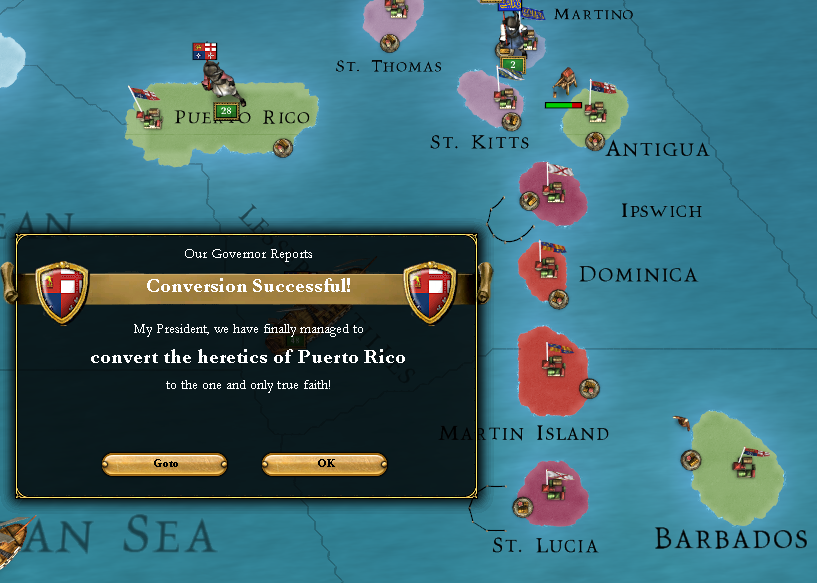
By the mid 1780s, the former Sevillian holdings in the Caribbean are well on their way to becoming productive, loyal Italian bastions in the region. Catholicism spreads quickly in the new colonies.
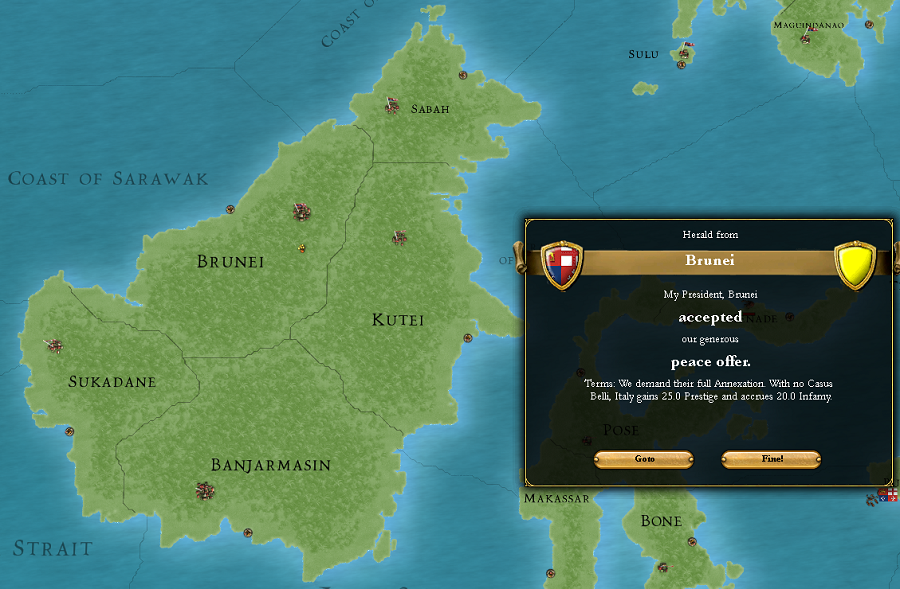
In 1787, Brunei officially surrenders after a long occupation. The island of Borneo receives a large amount of attention after the fall of Brunei, with massive infrastructure investments along with the arrival of Italian missionaries and merchants. The center of trade in Brunei suddenly becomes the busiest in the world.
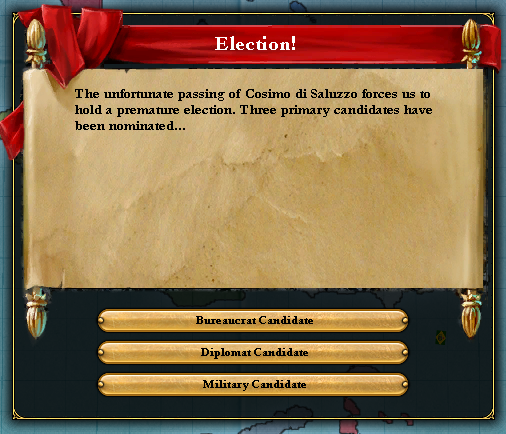
Doge di Saluzzo spends his remaining time on Earth dealing with the resulting instability of integrating the distant nation into Italy. In 1804, he passes away and a vote is called to determine his replacement.
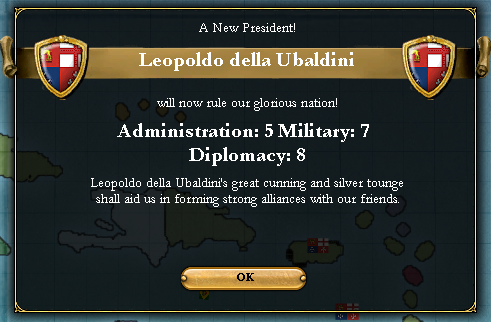
The new Doge is a man named Leopoldo della Ubaldini. Leopoldo excels in both foreign relations and military strategy.
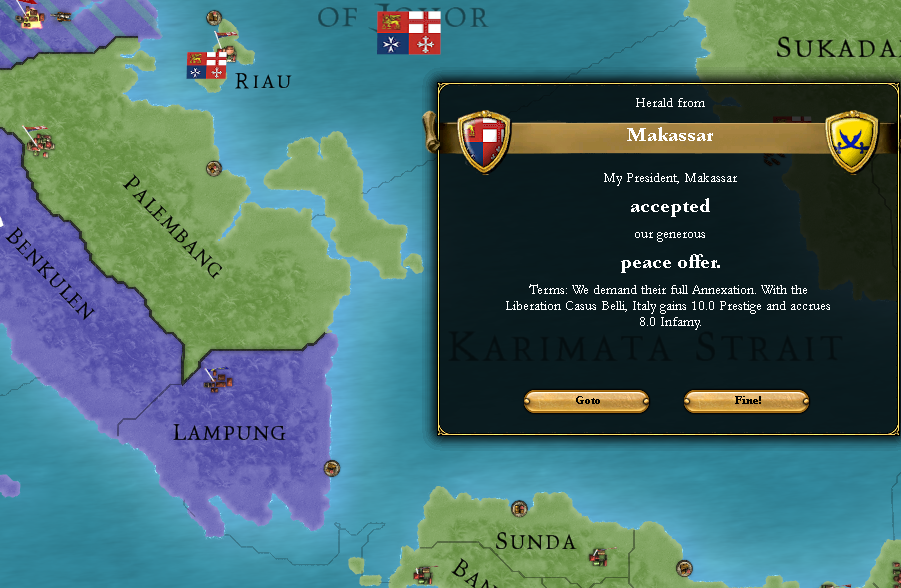
The new Doge prepares for the complete conquest of Sumatra by first establishing a foothold on the island. The tiny nation of Makassar is targeted, and from it Italy seizes the islands of Riau and the coastal province of Palembang.

From this base, Italy then launches a proper invasion of Sumatra. Aceh and Malacca are each sent declarations of war. Prior to Italian invasion the two powers clashed with each other for control of the island, but with the arrival of Italian invaders the two sides make peace.
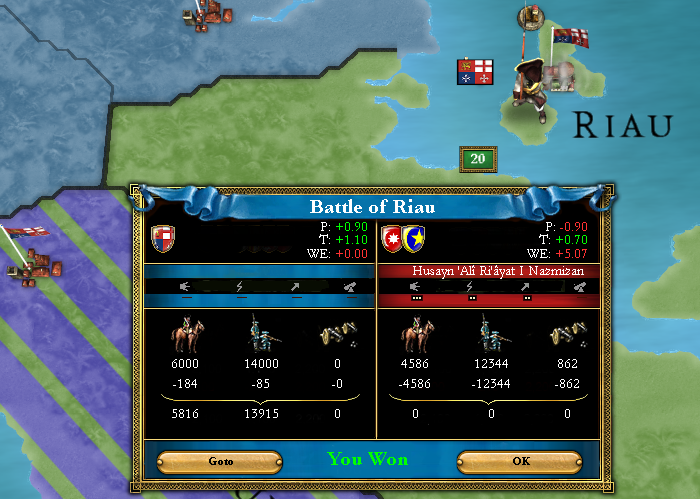
The two powers attempt to present a unified resistance to the Italian invasion, but their combined armies are bottled up and defeated on the islands of Riau.
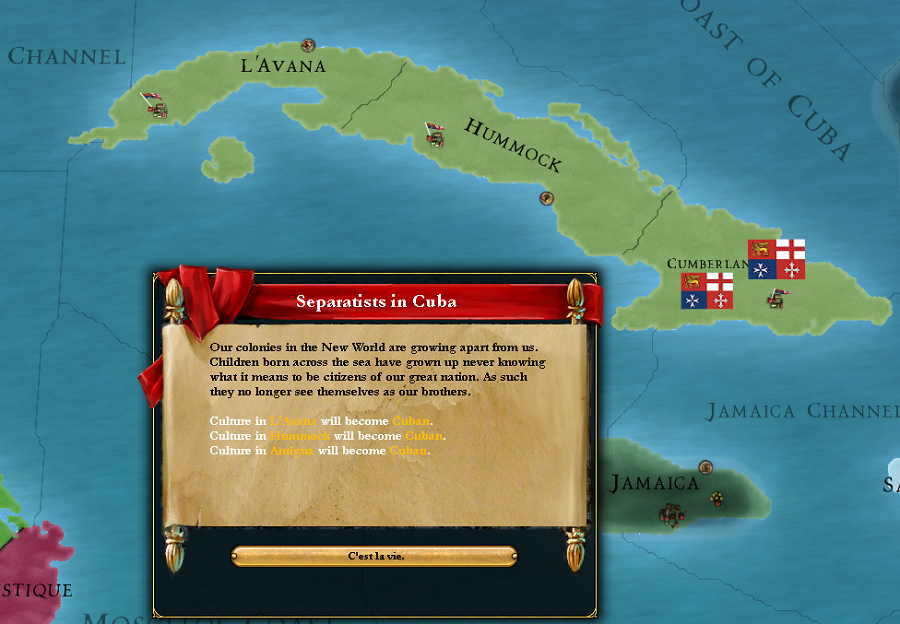
An uneventful war against England results in the conquest of Cuba as well as other Caribbean islands. The sad state of England's navy allows Italian troops to jump from island to island in the Caribbean unopposed, sacking and capturing colonies without resistance. The Italian 8th Navy's blockade of the British Isles leads to a quick victory with England surrendering all of its Caribbean holdings. The residents of Cuba however no longer identify with either their English roots or their new Italian rulers. This difference in culture makes the island a particularly challenging territory to rule.
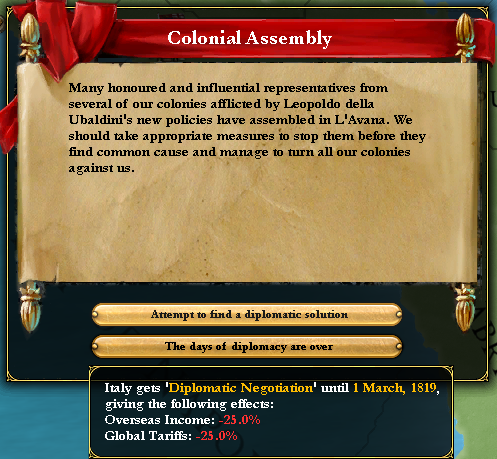
Representatives of Italy's Caribbean colonies gather in Cuba in 1809 and compile a list of grievances to submit to the Doge. In an effort to prevent the same large scale revolts that have been seen in North and South America, the Doge submits to many of the colonist's demands.
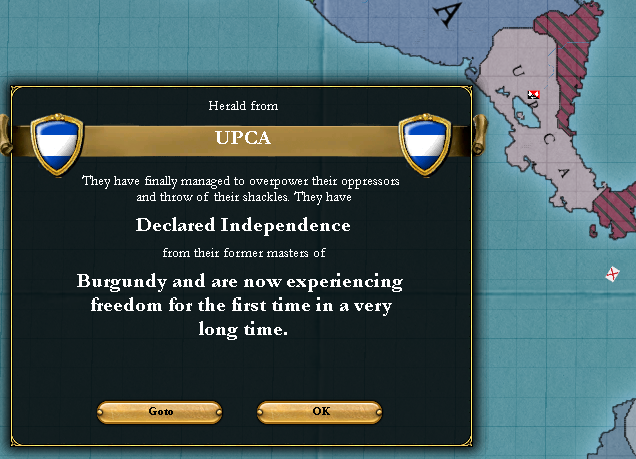
Burgundy loses its hold on its Central American colonies the following year to colonial revolutionaries.

In 1816, the occupied island of Sumatra is annexed and added to Italy's Asian territories. This conquest represents the final large military operation by Italy in the first quarter of the new century.
The World of 1821
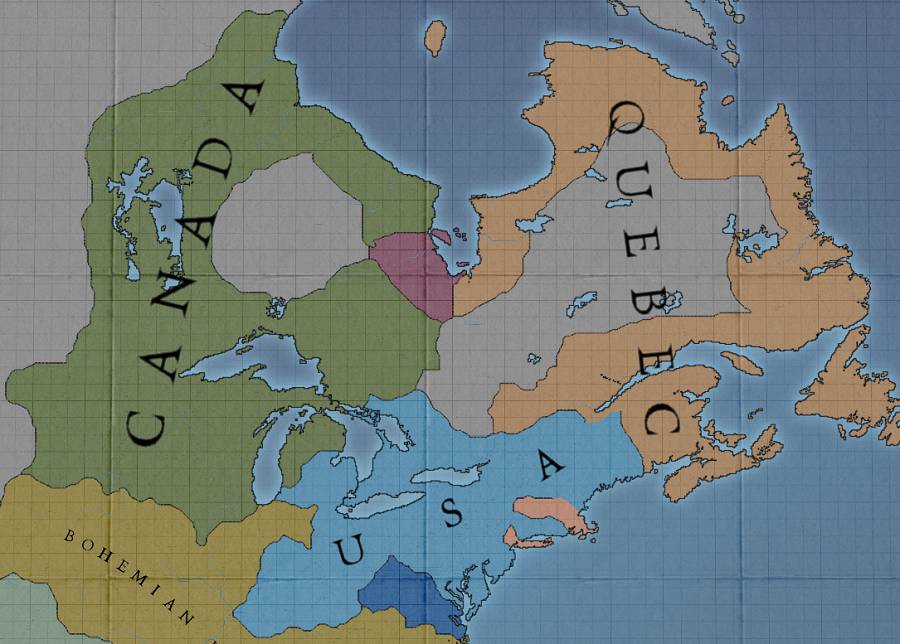
In North America, Gelre collapses in the face of a new Canadian kingdom. Quebec and the USA stand as successful revolutionary powers as well, though the USA struggles to advance into well-defended Bohemian colonies to the south. The USA also suffers from repeated struggles against Morocco, with Morocco currently controlling both Manhattan and Massachusetts.
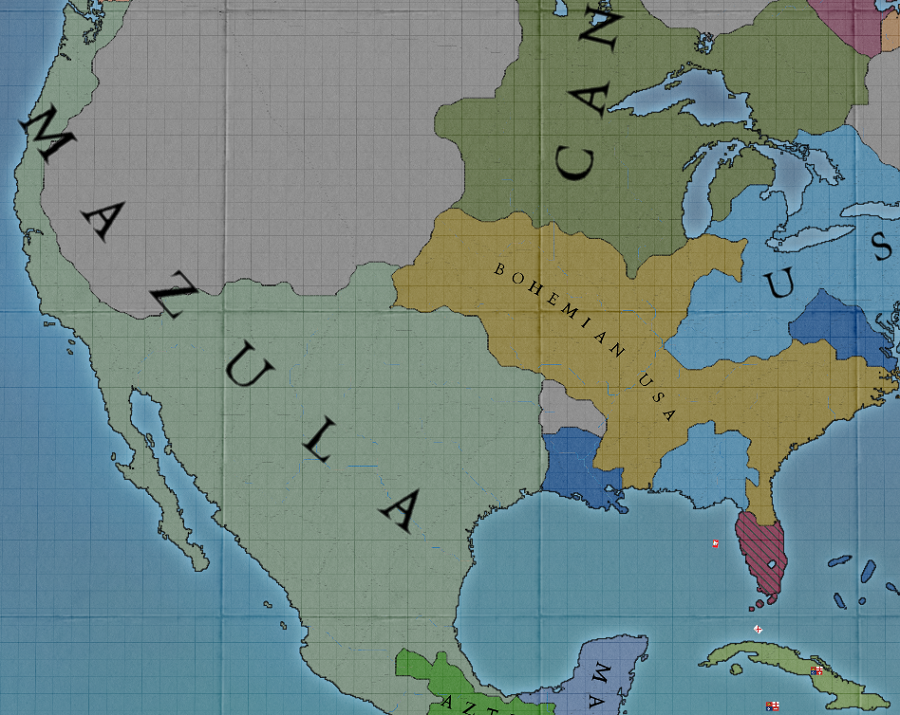
Southern North America is dominated by the massive revolutionary Sultanate of Mazula which broke away from Iberia in the prior century. The USA slowly makes advances against Bohemian and Swedish colonies where the people identify as Americans, but Bohemia is a dangerous opponent. Burgundian Florida is occupied by American patriots. The Doge's accommodating attitude towards Cuba has lead to firm Italian control over the island.
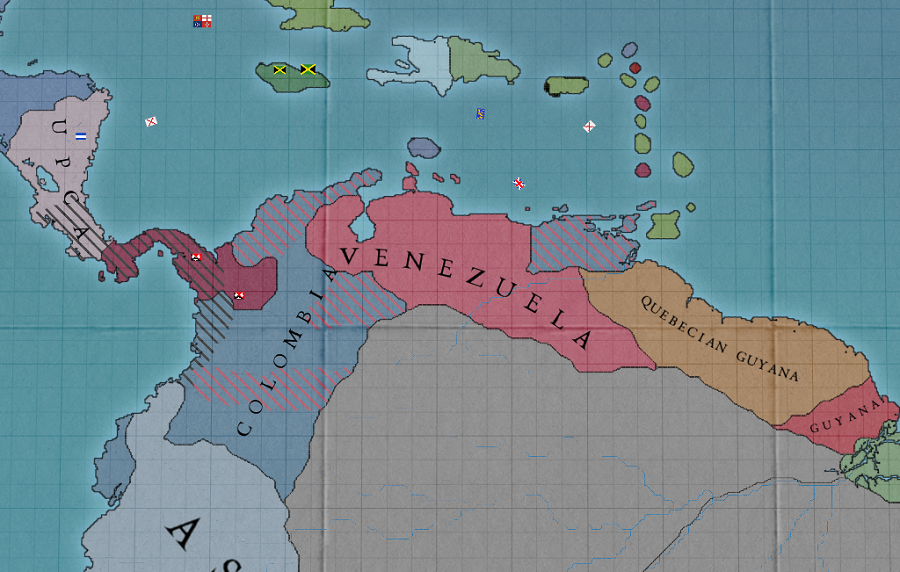
Northern South America is in a state of Chaos. Colombia and Venezuela struggle for dominance. Quebec attempts to become a colonial power in and of itself with the conquest of Guyana. The Italian colonies in the Caribbean bring home a wealth in tariffs from valuable goods like coffee, sugar, and tobacco.
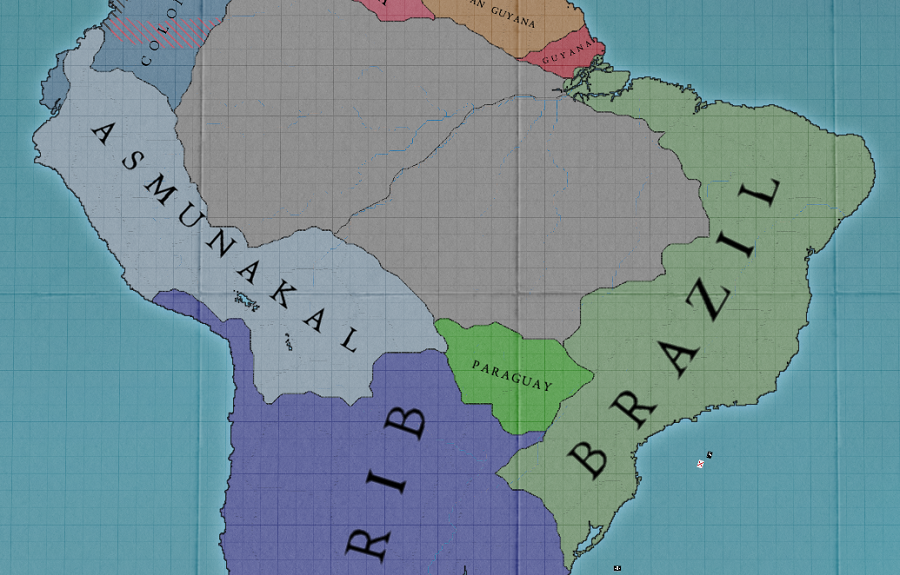
The Sultanate of Asmunakal absorbs the former Incan lands and becomes rich from the gold reserves there. Brazil manages create a stable, prosperous Catholic Kingdom on a mostly Sunni continent.
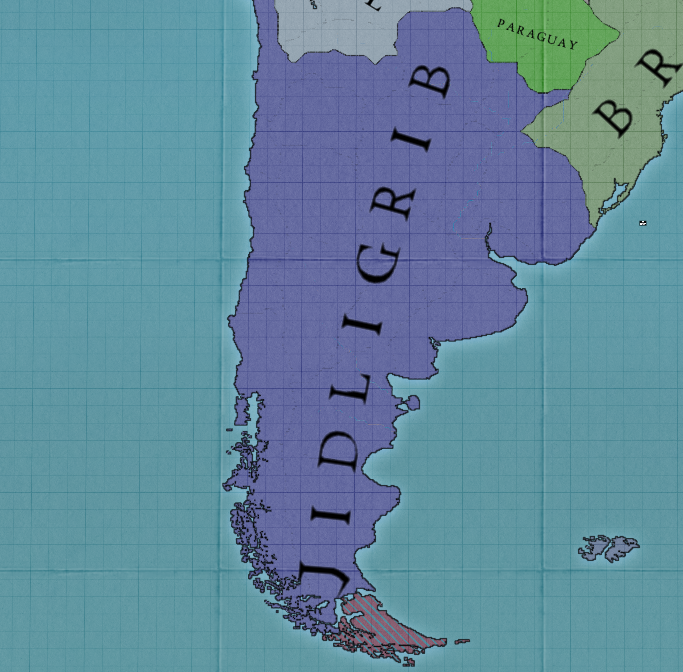
The southernmost portion of South America lies in the undisputed control of the gigantic Sunni theocracy of Jidligrib.
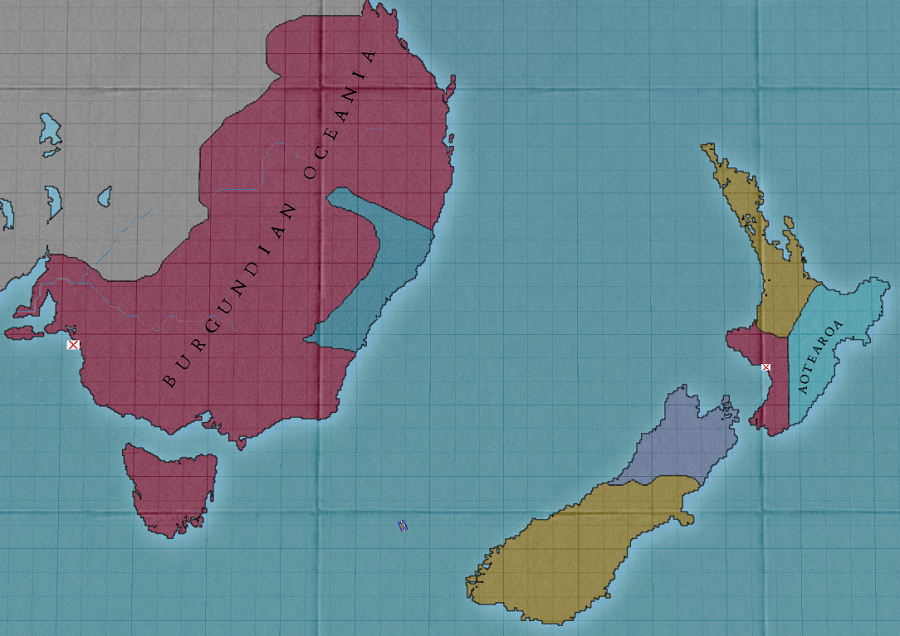
While Italy can lay claim to most of Southeast Asia, Australia is largely under Burgundian control. Bohemia, Champagne, and Flanders offer them some resistance, however.

In Europe, the balance of power has changed little in the past 50 years. Bohemia continues to grow stronger, Bavaria continues to consolidate central Europe under its rule, and Burgundy, much like Italy, maintains relatively stable borders. England finally brings Wales under its control and declares the union of Great Britain.
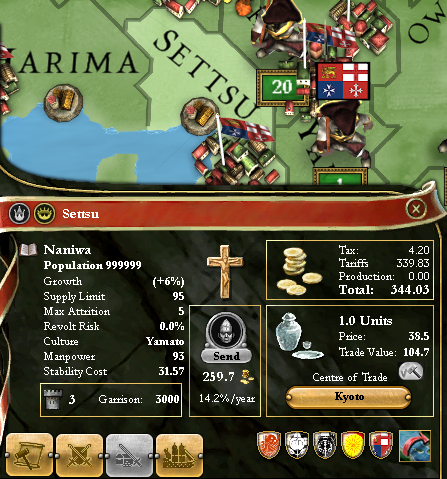
The Japanese province of Settsu can claim to be the most prosperous of Italian oversea holdings. The chinaware industry there generates a wealth of tariffs for Italy.
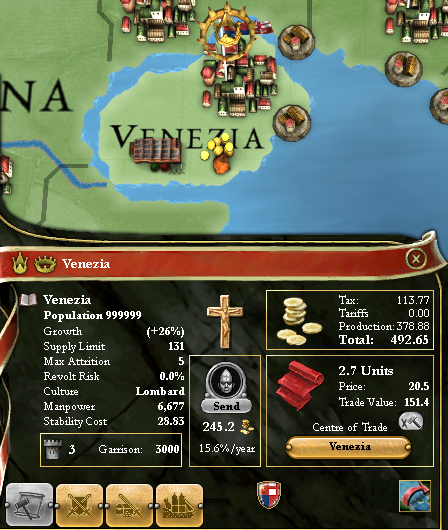
Venice itself refuses to be outdone, however. Its bustling center of trade and booming textile industry make it the most productive city in the nation.
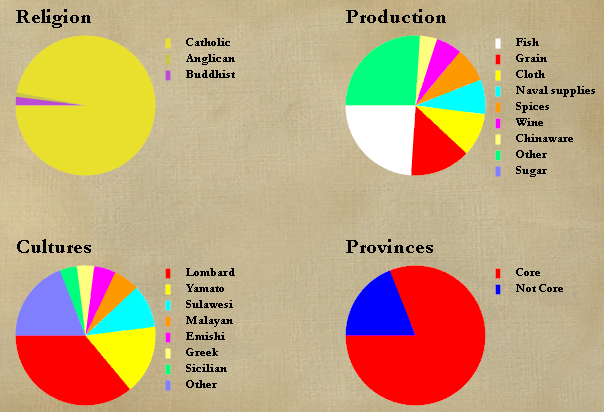
Miscellaneous data on Italy.
1821 World Map
